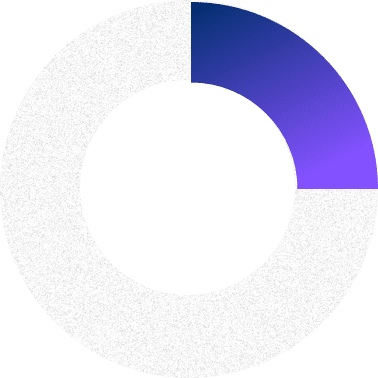Voices from NYSBA Global: Diversity, An International Perspective
2.1.2020
CULTURAL COMPETENCE IS HOW WE BRIDGE THE CHASM CREATED BY DIVERSITY
Give a man a fish, and you feed him for a day. Teach a man to fish, and you feed him for a lifetime.1
Diversity is complex. It encompasses the differences that exist between individuals. It is found in the different identities a person may ascribe along certain categories that include: race, ethnicity, nationality, religion, economic class, age, gender, sexual orientation, mental and physical ability, and learning styles. In the United States efforts to advance diversity mainly focus on categories of race, religion, sexual orientation and gender identity. In other more racially homogenous countries, categories of diversity that are more emphasized include gender, nationality, economic class, or religion as racism may not be as great an issue. Universally, diversity initiatives are often created from a perceived need to right the balance between the privileged and the disenfranchised. Diversity is necessary to support those people who feel deprived of a legal right or privilege 2 compared to those who wield authority with those rights and privileges. Diversity is needed to help those people who suffer daily indignities inflicted by those whose unearned privilege relies on perpetuation of these indignities to remain privileged. It becomes “us versus them” in perspective and application. The issue with this approach is that it does not actually manifest feelings of inclusion by all individuals in any particular culture. You might achieve a “diverse” environment while losing the goal of unity that diversity and inclusion should also foster.
This is evidenced by the rise in nationalism, globally. You increase focus on one group, but the feelings of being left out by another group also increases. It creates a tug of war over who gets priority and attention. It just shifts the burden or points a different finger of blame without eliminating the problem at issue. So, perhaps the way to address diversity and inclusion is to work on cultural competence which is a learning process that leads to an ability to effectively respond to the challenges and opportunities posed by the presence of social cultural diversity. Cultural competence allows the “us” to see, empathize and relate to the “them” and vice versa. To do this we need each other.
WE NEED EACH OTHER TO CREATE SUSTAINABLE CHANGE
At the NYSBA International Section’s Global Conference in Tokyo, I (Diane) was inspired by the range of experiences, and as one does, I reflected on my own experiences as I was recently diagnosed with an anxiety disorder. Responses to a recent article I wrote3 were heartbreaking yet encouraging. I realized that trying to fit in to what I perceived to be the expected norm, had actually manifested the suppression of who I was. My experiences, quirks, intellect, creative expression were all being churned up and filtered out of my day to day activities like a centrifuge. I was battling with myself in trying to maintain my individuality and respect my history while fitting in with the culture I was surrounded by on a daily basis.
Similarly, I (D.L.) experienced Tokyo in a way that changed my perspective on what diversity means. Walking around, I never felt that I was being looked at as an African American man. The stigma and stereotypes often associated with “being black” in the United States were largely non-existent. I was simply a foreigner. Sometimes I would get sensory overload by the number of unknown sights and sounds everywhere around me. Nothing was familiar, but not once did I ever feel threatened by being different. Instead, strangers would stop to give me directions; our only commonality being that of good nature. I left more fully appreciating that being different is a universal part of life and the increasing globalization of our world will cause us to come in contact with our differences more often. Those differences, however, should not keep us from being good to each other.
The tension and pressure to not be different exists in our society. We ostracize those who stand out. We have created systems socially and institutionally to discourage it. This in turn creates the anxiety and stigmas that plague us. No one person is at fault for this as we all play a part in perpetuating this negative cycle. To counter this, diversity and inclusion initiatives are predominant in many work environments. It is often part of everyday dialogue. It is ingrained as the only acceptable way of acting and interacting with colleagues, clients, in fact everyone. However, the issue is that no matter how many trainings an individual attends, or how much they hear about diversity and inclusion initiatives, unless they have cultural competence, it is unrealistic to expect them to shed their blind spot biases and live in a truly inclusive existence.
According to the The Ebbinghuas Forgetting Curve4, an individual forgets up to 90% of what they learn after just 4 days if it is not reinforced. So, one-off trainings are highly ineffective in creating real change when it comes to diversity and inclusion. Too many trainings also run the risk of desensitization. In addition, it is extremely difficult to create global diversity and inclusion training for multinational organizations if the focus is simply on identifying particular classes of individuals as being diverse or non-diverse.
CULTURAL COMPETENCE AS A PATH TO DIVERSITY
Embracing diversity requires us to change and become culturally competent. Change is messy and scary, diversity and inclusion initiatives challenge who we think we are, they threaten our beliefs. They augment all the “what ifs” the primitive side of our brains generate. They require us to see life through the lens of “the other” whom we have little in common. We have different traditions, shared beliefs, and life experiences. Crossing this chasm of the unknown is daunting. With so much change being demanded, it is natural to resist. Again, this is why we need each other.
We cannot approach this as an “us” and “them” scenario as doing so will increase the divides. We need to be patient and teach each other how to coexist as cultural competence requires all individuals work together.
Recall, from our youth, that children play. When we were children our play was virtually indiscriminate. If you could move and laugh, we could have fun. We only learned who to play with and who not to play with from external forces. Maybe it was family, maybe it was media, maybe it was the books we read and history lessons we learned; somewhere along the way we developed implicit fears rightly or wrongly of who was “safe” that still seep into our worldview and relationships today. Becoming culturally competent enables us to consciously and intentionally go back to our “first innocence” where we meet on common principles: let’s have fun. Diversity then broadens the pool of friends to play with.
True, there is a history in many countries and particularly in the United States where the disenfranchised have experienced years of unfair treatment that they strive to overcome. True, those with unearned privilege have a role to play in creating equitable opportunities for everyone. Cultural competence enables us to bridge the gap that is created by solely focusing on diversity. Embracing diversity and inclusion then requires a commitment to three things: (1) being intentional – otherwise implicit bias will impede progress; (2) being uncomfortable – learning from and working with people different from you is not always easy; and (3) being authentic – this creates bonds of trust that are essential to advancing diversity and inclusion.
We need to help each other, educate each other, open up dialogue and not just attend trainings to tick the box that we’ve completed them. We need to embrace the differences between us and be excited that a different perspective is not threatening but an opportunity to innovate. When we are able to do this, we will be able to have empathy for each other and listen to each other without shutting down and alienating others. This is universal and no matter what culture or country you live in, this approach applies as it eliminates labels.
It’s the same as fishing, merely providing diversity training changes perspectives for the day, creating cultural competence, changes perspectives for a lifetime.
- 1826 March 25, The Religious Intelligencer, Volume 10, Number 43, Ladder of Benevolence, Quote Page 681, Column 1, Published by Nathan Whiting, New Haven, Connecticut.↵
- Wikipedia, https://en.wikipedia.org/wiki/Disfranchisement November 19, 2019↵
- Anxiety, A Slippery Slope: from Normal to Disorder and…Back Again?, Diane O’Connell, Vol. 91, No. 8, November 2019 https://staging-api.nysba.org/Journal/2019/Nov/Anxiety__A_Slippery_Slope/↵
- Praveen Shrestha, “Ebbinghaus Forgetting Curve,” in Psychestudy, November 17, 2017, https://www.psychestudy.com/cognitive/memory/ebbinghaus-forgetting-curve.↵



